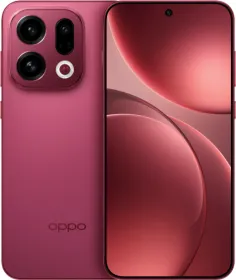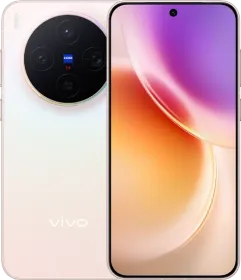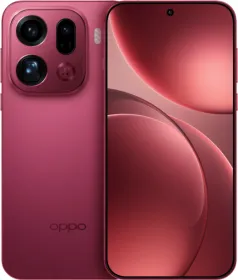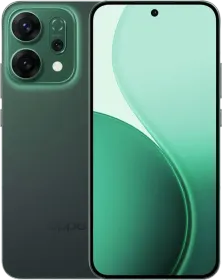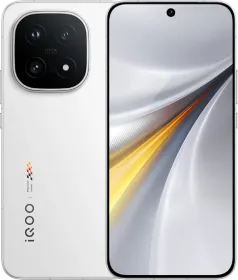I’ve been using the OPPO Find X9 for almost a week now, and honestly, it’s one of the most impressive flagships I’ve tried in a while. The first thing that caught my attention wasn’t even the specs. It was the design and how effortlessly smooth the software felt.
Then came the cameras, and that’s where things got even more interesting. But some things about the phone felt strange. So, here’s a closer look at what makes the OPPO Find X9 such a standout in my first impressions and why it’s worth waiting for.
Design and Build

The OPPO Find X9 takes a new approach this year, ditching the Oreo-style camera ring for a rectangular housing on the top left. I really like this new design, and honestly, it looks even better than one of my current favourites, the iPhone 17.

It’s slimmer at just 7.99 mm, weighing 203g, yet feels solid with IP66, IP68, and IP69 ratings. Yes, three IP ratings.

The flat-edged frame feels premium and comfortable, while the matte finishes on Titanium Grey look timeless (Space Black is also available). There’s also a new Snap Key on the side, which you can customize to do things like launching the camera, toggling flashlight, voice recording, or open AI Mind Space.
Display

The Find X9 packs a 6.59-inch AMOLED panel with symmetrical 1.15 mm bezels, probably the thinnest on any phone. Yes, the bezels are so thin that you forget they even exist. It peaks at a massive 3600 Nits and 1800 Nits outdoors, supports Dolby Vision, HDR10+, HDR Vivid, and covers 100% DCI-P3.

The 120 Hz refresh rate and 3840 Hz PWM dimming make it both vibrant and easy on the eyes during late-night use. And yes, there’s finally a 3D ultrasonic fingerprint scanner, which is 35% faster and 33% more reliable than the old optical ones. It is also placed in the perfect location unlike the Find X8.

Speakers and Haptics

The dual stereo speakers are loud, crisp, and deliver impressive overall sound. Paired with the strong X-axis haptics, the overall experience feels tight and responsive, whether you’re gaming or typing. It’s not the best out there but definitely among the best.
ALSO READ: I got my hands on the OPPO Find X9 Pro, and I’m impressed
Software

ColorOS 16 (based on Android 16) runs beautifully on this phone. Animations are fluid, transitions are natural, and the system feels well-optimized. The new AI-powered additions like Mind Space and Smart Scene Detection add small touches that make everyday use better. I’ve made a dedicated review of ColorOS 16, which you can check out here.
ALSO READ: ColorOS 16 review: I Tested it on the Oppo Find X9 Pro, and it’s a Perfect Match for the Hardware
Performance

Under the hood, the Find X9 runs on the new MediaTek Dimensity 9500 chip built on TSMC’s 3 nm process. It’s paired with LPDDR5X RAM and UFS 4.1 storage, making everything from app launches to multitasking feel seamless.

The phone doesn’t heat up either, thanks to a redesigned vapor chamber that keeps temperatures in check. Everyday performance is buttery smooth and I haven’t noticed a single stutter yet.
Cameras

This is where OPPO clearly went all in. The Find X9 uses a triple 50 MP setup: a Sony LYT808 main (1/1.4-inch, f/1.6, OIS), a Sony LYT600 periscope telephoto (1/1.95-inch, f/2.6, 73 mm), and a Samsung JN5 ultra-wide (1/2.75-inch, f/2.0, autofocus). The results are genuinely stunning.






The main sensor handles dynamic range beautifully. The new Neon filter gives night scenes a cinematic look without overprocessing, and the new LUMO Image Engine keeps everything detailed and clean. The telephoto lens is easily one of the best portrait shooters I’ve used, and edge detection is nearly perfect 8/10 times, even at long distances.




That said, the telemacro capability is missing. The 3X lens focuses only at around 42 cm, meaning it switches to the main sensor for close-ups. OPPO should’ve added support for telemacro.




The ultra-wide camera is familiar from last year’s Find X8, but it’s still great for landscapes, wide shots, and creative shots, though detail drops slightly at the edges.



The front camera uses a Sony IMX615 (32 MP, 1/2.74-inch, f/2.4, 21 mm). Selfies are detailed and natural, though the lack of autofocus might bother some, especially in low light. Beauty mode comes turned off by default, which I really appreciate. There is no weird smoothing of the skin either.
You also get XPAN and Master modes, both with better UI and tuning. XPAN now looks and feels more like an actual Hasselblad camera, while Master Mode offers complete manual control with authentic tones. And for video, yes, it supports 4K 120 fps recording, both in Dolby Vision HDR and LOG. I’ll share more details in my full review.


Battery and Charging

The Find X9 houses a massive 7,025 mAh battery, one of the biggest ever in a flagship, paired with 80W SUPERVOOC wired and 50W AIRVOOC wireless charging. I’ve been getting anywhere between 9 to 11 hours of screen-on time with heavy usage. That’s seriously good. Oh, and OPPO claims it retains 80% of its health even after five years.
What’s Missing on the Find X9?

There’s no LTPO display support and it’s still using USB 2.0 speeds, which is outdated for a phone this premium. Oh, and the support for telemacro.
Final Words

The OPPO Find X9 leaves a solid first impression, not perfect but confident. It’s got that refined design, a killer main camera, and battery life that genuinely holds up. But it’s not without its misses, no LTPO panel, USB 2.0 speeds, and that telemacro limitation still sting a little for a late 2025 flagship.
It’s not the most exciting flagship from OPPP, but it’s one that actually makes sense, and sometimes, that’s exactly what you need. The OPPO Find X9 is set to launch in India on November 18, alongside the Find X9 Pro. Stay tuned for my full review, I have a lot more to share.
ALSO READ: OxygenOS 16 vs. ColorOS 16: Closer Than Ever, Yet Not the Same

You can follow Smartprix on Twitter, Facebook, Instagram, and Google News. Visit smartprix.com for the latest tech and auto news, reviews, and guides.















